Since riding the 1200 miles of the Ho Chi Minh Trail, mountain biker Rebecca Rusch wants to use cycling to address lingering wounds from the Vietnam War. Josh Letchworth Photo.
At first, it just looked like a small pond. The local villagers ignored it, and simply went on with their day. But as Rebecca Rusch got closer to the body of water her riding partner Huyen Nguyen revealed its actual identity. It was a bomb crater. Rusch couldn’t believe her eyes, but then she spotted two. Three. Five. Suddenly the road was snaking through a field of war scars. From the ground it’s only possible to grasp a small snippet of the devastation, an aerial view of Laos is much more telling. Here on the Ho Chi Minh trail, you’ll find a landscape that reflects the sheer brutality of the Vietnam War.
Two million tons of bombs were dropped on Laos from 1964-1973, making it the most bombed country per capita in history. To put those 500,000 bombing missions into perspective, that’s the equivalent of unloading a planeload of bombs every eight minutes, 24 hours a day, for nine years. What’s much tougher to spot are the thousands of unexploded ordinances (UXO) still dispersed throughout the country.
RELATED: Life Lessons From a Paralyzed Skier, and the Patroller Who Saved His Life
It’s estimated that 30 percent of these bombs never detonated, and they wait like vipers in the grass. The war may have officially ended in 1975, but these UXO have since claimed 60,000 lives. 40 percent of those victims were children, who often confuse the devices as toys. Accidents most commonly happen when villagers are clearing their land. Fear hangs thick in the air as they try to harvest their food. Forced to tiptoe around hand grenades and airdropped bombs, these rural communities are economically stunted. UXO removal teams are diligently at work trying to clear the land, but with their limited resources, complete clearance is expected to take at least a century—and that timeline is a generous estimation.
Rusch was unaware of any of this devastation when she first arrived here in 2015. What initially brought her to Southeast Asia was to deal with family matters. In 1972, her father, USAF Captain Stephen Rusch, was shot down while flying in a combat mission during the Vietnam War. Stephen’s body was never recovered, and he was declared “Missing in Action”. That was until 2003. Her father’s remains were discovered by a joint U.S./Laos search team and brought back home. Looking for a greater sense of closure and understanding of the events that claimed her father, Rusch planned a grand expedition to ride all 1,200 miles of the Ho Chi Minh Trail and find his original crash site. Vietnamese rider Huyen Nguyen joined her on the adventure, and it was intimately documented in the Emmy award-winning film Blood Road. The movie juxtaposed Rusch and Nguyen’s journey while exploring the tragic aftermath of this bloody conflict.
The Emmy award-winning film follows Rusch’s quest to find her father’s original crash site from the Vietnam War.
Once Rusch was pedaling through communities torn apart by shrapnel, it became clear that this trip wasn’t just about finding closure. It was also about healing.
Returning to Laos
Four years after that ride I’m sitting across from Rusch in her hometown of Sun Valley, Idaho. It’s the middle of the Outerbike tradeshow and Rusch is leading a group ride in about an hour. It’s enough time to dive into her Be Good Foundation, which became a formal 501c3 this year. With her bike in the hands of her mechanic, we scurry over to the tradeshow’s impromptu mess hall for a place to sit and chat. She can’t help but have a big smile on her face when asked about the non-profit organization. Those two words, “Be Good” have become a sort of a mantra for her. Originally penned by her father each time he signed off a letter while away at war, these simple instructions now serve as her wayfinder as her foundation grows.
"If anything should happen to me, please don't let me die to Sharon and Becky. Be Good, Steve."
-Wartime letter from USAF navigator Capt. Stephen A. Rusch
“My dad is teaching me now, even though he’s not here,” she explains. These little connections to him are special since she never had the chance to know him. That changed after biking the Ho Chi Minh trail. His lessons are coming to fruition for her now in ways she could've ever imagined.
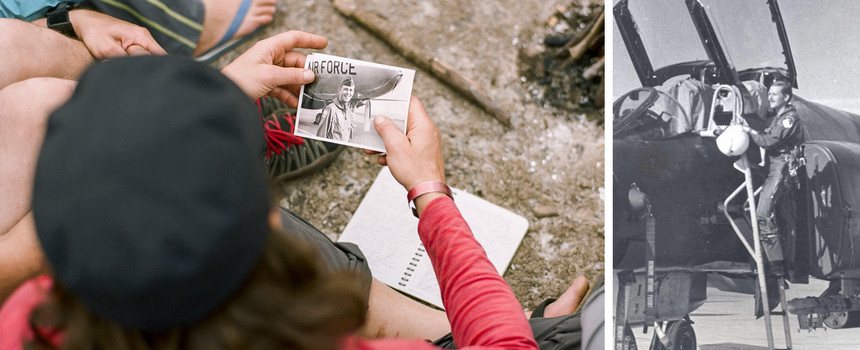 Rusch looking through old photos of her father Capt. Stephen A. Rusch. She was very young when he passed away in the Vietnam War. Josh Letchworth & Archive Photo.
Rusch looking through old photos of her father Capt. Stephen A. Rusch. She was very young when he passed away in the Vietnam War. Josh Letchworth & Archive Photo.
Lesson one was recognizing a need. “Doing Blood Road was a personal project, and I achieved my goal of finding my dad and becoming the first person to ride the Ho Chi Minh Trail, but what has happened since has given me incredible purpose,” she explains. Before the Ho Chi Minh trail, Rusch was the textbook definition of success. The seven-time World Champion spent her whole career racing, pushing her limits, and topping podiums. She’s rightfully earned the nickname the “Queen of Pain” from dominating grueling endurance races like the Leadville 100 and Dirty Kanza. On top of being a celebrated mountain biker that was recently inducted into the Marin Mountain Bike Hall of Fame, Rusch is a multi-disciplined athlete with serious chops in white water kayaking and rock climbing. Yet, launching the Be Good Foundation has far superseded any medal or race she’s won.
“As people, we evolve beyond ourselves. It’s a natural progression to start looking outside your circle and suddenly realize what you can contribute in a bigger way,” she emphasizes. “It’s all the notion of leaving a legacy, and hopefully it’s not one of war but one of healing.” Since starting the foundation, Rusch has funded a 12-person all-female demining team, the destruction of 61 UXOs and 44 cluster munitions, and cleared 31 acres of land in Laos. Wanting to do more, Rusch sought out the most powerful tool in her toolkit: cycling.
Rusch and Nguyen riding the Ho Chi Minh Trail. Josh Letchworth Photo.
“For most people here, the bike has had a positive effect on their lives,” she says motioning to the bustling Outerbike crowd around us. This group of people is a microcosm of the whole industry: athletes, bike mechanics, brand managers, reps, bike guides, and the everyday mountain biker. Yet, despite all our differences, we feel a shared camaraderie that’s united by our love for biking. This passion creates a contagious energy that’s evident on a group ride with a bunch of strangers or at the evening fundraiser for the local trail building association. It’s this community that Rusch has long leaned on, and she’s now taking it with her to Laos.
Teaming up with her Blood Road support crew and the local UXO clearing non-profit, Mines Advisory Group (MAG), Rusch created MTB-LAO. Now in its fifth year running, it’s an organized adventure mountain bike on a section of the Ho Chi Minh trail that was explored in her film. The ride spans 10 days and is fully supported and planned by Rusch. A typical day during the adventure has the group riding about 38.5 miles while exploring primitive roads and jungle singletrack.
“I go back to Laos selfishly because I’m in love with the place,” she says, emphasizing the many aspects of Laos that are often overshadowed by the war. For example, the country is home to an incredible biological diversity and rich culture.
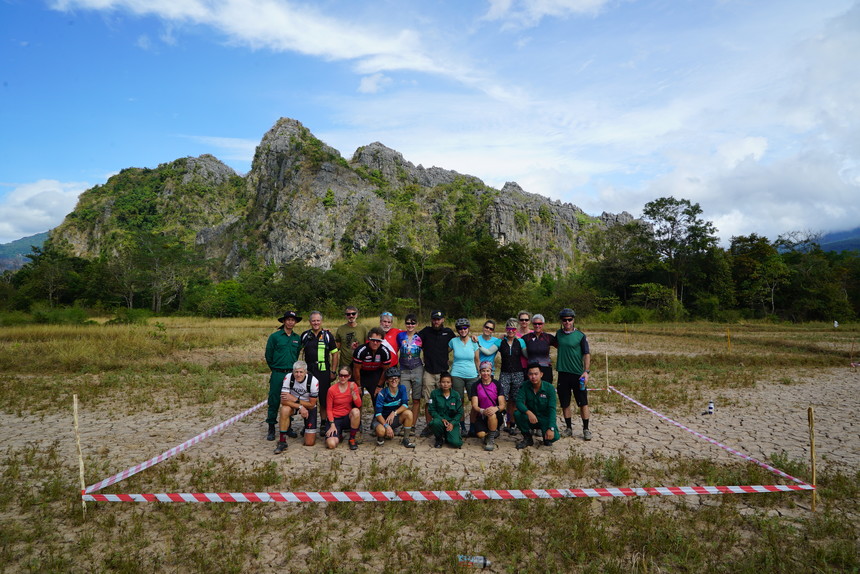
When not on the saddle, riders are connecting with local villagers and learning more about Laos’ welcoming community. Throughout this adventure, Rusch hopes to spread greater awareness on the UXO cleanup efforts. That’s where MAG helps out. MTB-LAO participants can assist in cleanup efforts facilitated by the non-profit. They visit with the field workers and watch a bomb detonation firsthand. The experience is like walking through a history book. “MAG has been incredibly receptive to our cause,” she says. Truthfully, the team at MAG could have never fathomed collaborating with a group of cyclists, but that’s the beauty of the foundation. It reinforces this greater notion of using our unique skills and talents and applying them in an impactful manner, and for Rusch, that means taking on these kinds of bike expeditions.
“It’s no different than seeing someone get a flat on the trail. It doesn’t matter what bike they’re on—you’d help them. This work with MAG is no different,” Rusch says and hopes that MTB-LAO participants walk away feeling that same sense of greater purpose.
What it means to “Be Good”
Craters are not the only remnants of war in Laos. An attentive eye will notice shrapnel repurposed into everyday objects throughout villages. Bombshells become planter boxes. Pieces of planes are makeshift benches. Even the homes are retrofitted with the lingering metal because nothing goes to waste. But when Rusch returned to Laos, she’s witnessed this plethora of war debris undergo an unexpected metamorphosis. Biking up to a village home in Naphia she’s greeted by a group of smiling artisans next to active kilns. They’re proudly surrounding a heaping pile of glistening silver bands. Days prior, the elegant bangles were bombshells. Now, these pieces of jewelry will be sold in 40 different countries, with a portion of the profits generating a livelihood for the local villagers who created them.
Buying Back the Bombs from ARTICLE 22 on Vimeo.
The driving force behind this alchemy is a company called Article 22. It was created by Elizabeth Suda in 2009 after the entrepreneur traveled throughout Laos to learn more about the many female-led textile businesses that exist within Southeast Asia. But something else ended up catching her eye. A group of artisans was using the leftover bomb scraps to create spoons, a traditional art form taught from one generation to the next. Applying her knowledge from the fashion industry to this ancestral trade, Suda teamed up with these villagers to create a line of repurposed jewelry. The final result is what they call “buying back the bombs.” The money earned from Article 22 supports the village in two significant ways. First, it funnels back to MAG, which has helped clear three acres of land. Secondly, these artisans can financially support themselves with wages that are five times the local minimum wage. It’s a win-win for everyone.
When Rusch discovered Article 22, she immediately reached out to collaborate. It seemed like a natural fit since the jewelry maker was already working in tandem with MAG. Suda, excited about her cause, helped with facilitating a custom Be Good line for Rusch. Instead of the traditional single silver bangle, Rusch’s collection has a unique touch. Plucked straight from her father’s letters—handwriting and all—is her father’s message to be good. “It’s this wild cycle of taking something devastating and turning into something that’s making a difference,” Rusch explains. “Eventually the hope is that there will be no aluminum from the war left to make Jewelry.”
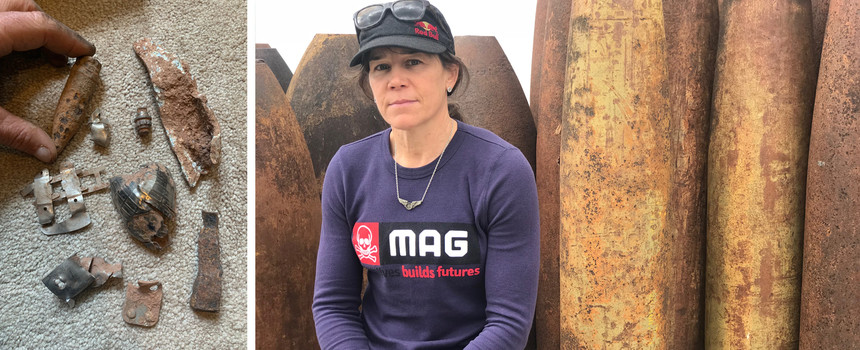 Rusch displays examples of the debris that is often found throughout Laos. Be Good Foundation Photo.
Rusch displays examples of the debris that is often found throughout Laos. Be Good Foundation Photo.
Looking back on that original expedition, it's wild for Rusch to see where it has taken her, and she hasn’t scratched the surface for what she wants to do with the foundation. The organization is still growing and evolving to fit her goals, which also has her working plenty here in the U.S.—particularly in her backyard. With events like her signature race, Rebecca’s Private Idaho, she’s hoping to help protect public lands and provide more opportunities for women in cycling.
“It’s good I have endurance cause I’ve been working my ass off for the last few years,” she jokes. It hasn’t been easy balancing everything, but she’s got good motivation pushing her. It always comes back to her bike. “The bike has changed my life. I honestly do feel like if more people had access to bicycles a lot of these problems—obesity, mental health, climate change, war—could be alleviated. It’s this tool that’s universally accepted and understood.”
Time has flown and Rusch needs to get back to the mechanic. Her Outerbike guided ride will kick off shortly. Today, that reminder to “Be Good” means helping out in her local community, but tomorrow or the next day it could take her somewhere else on the globe. Knowing Rusch, that could be anywhere. Regardless of the location, there’s one thing I’m certain about. She’ll have her bike along for the ride.
 To become more involved with the UXO clearing efforts check out the Be Good Foundation.
To become more involved with the UXO clearing efforts check out the Be Good Foundation.



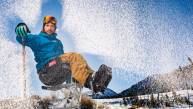
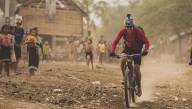

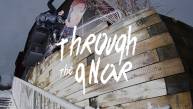
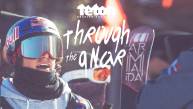
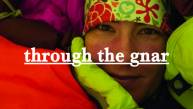
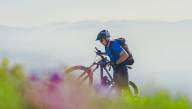
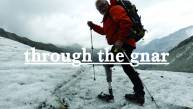
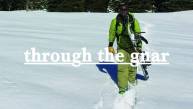
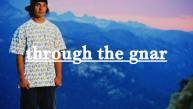

__video_thumb.jpg)
